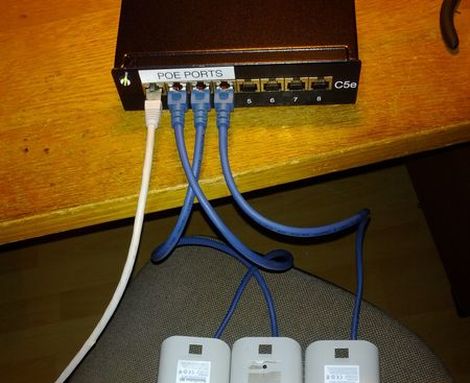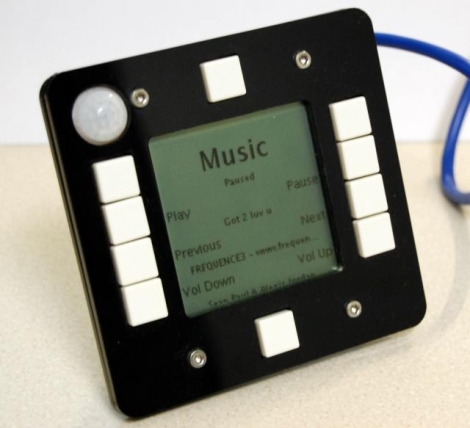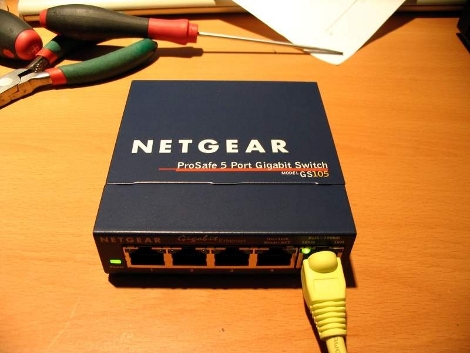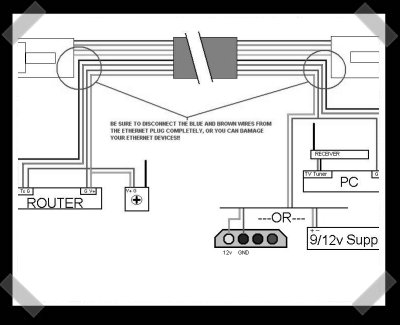
Depending on the scope of your requirements, Power over Ethernet (PoE) components can get pretty pricey. [Fire] wrote in to share a 4-port PoE solution he put together for under 20 euros (Ignore any SSL errors – we’ve checked it out, it’s safe).
The most expensive part of the build was the 8-port patch panel he purchased for 11 euros. He popped it open, wiring the first four ports for power after drilling spots for an indicator LED and the PSU. He wound the power lines through ferrite beads to hoping to dampen any interference that might occur before reassembling the panel.
In the picture above, you might notice that the panel is being powered via the first Ethernet port rather than through the barrel jack, which [Fire] said was done for testing purposes. When deployed in his network, he plans on using a regulated power supply from a junked laptop to provide electricity.
If you need to provide PoE to devices on your network, this is a great way to go about it. Using a patch panel like [Fire] has gives you the flexibility to easily wire up as many powered ports as you need without much hassle.













